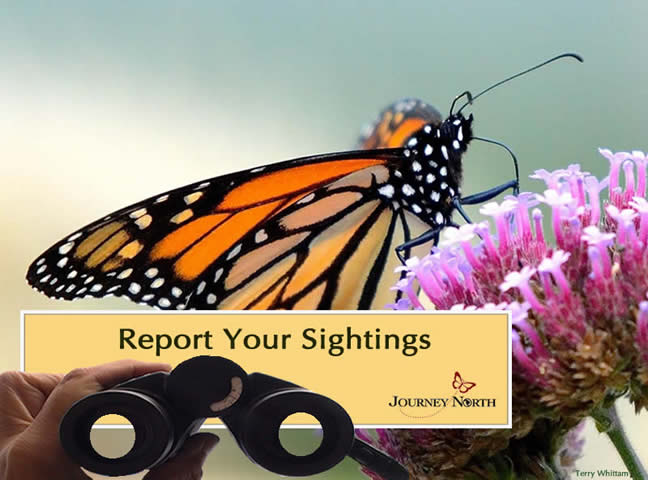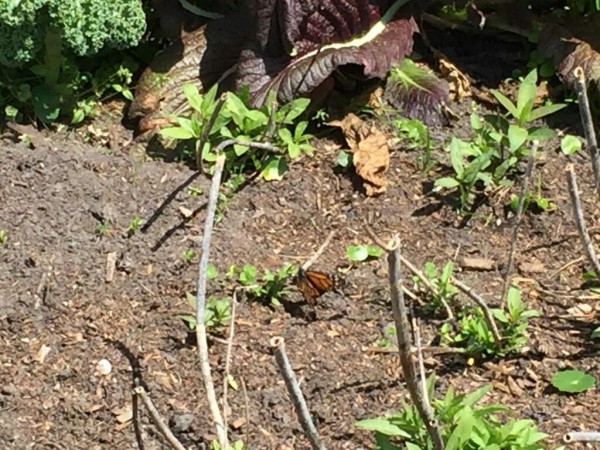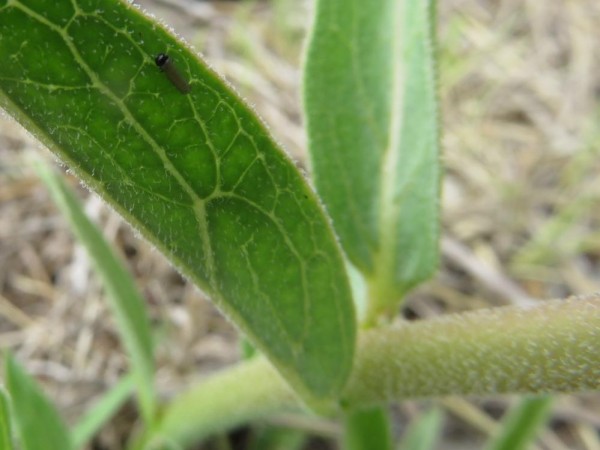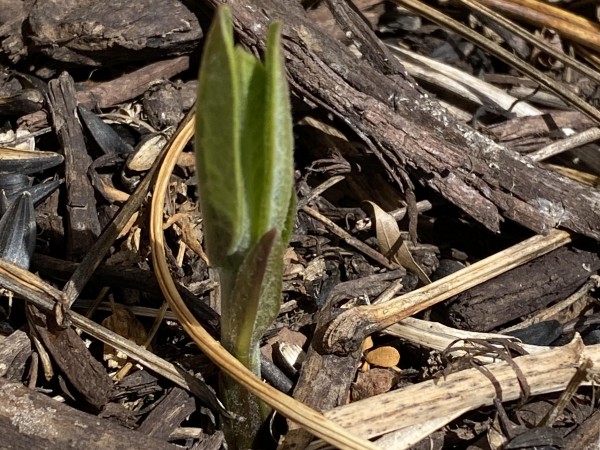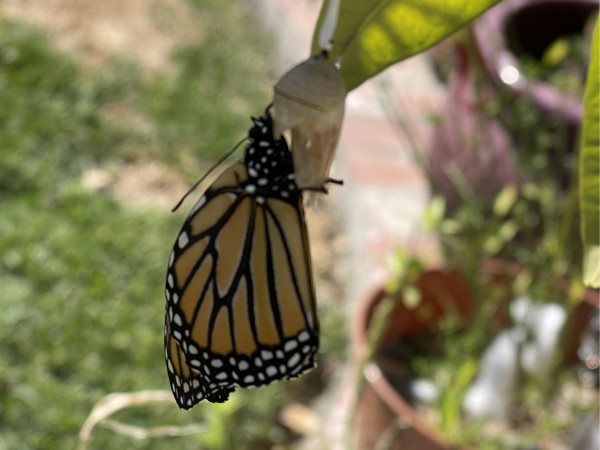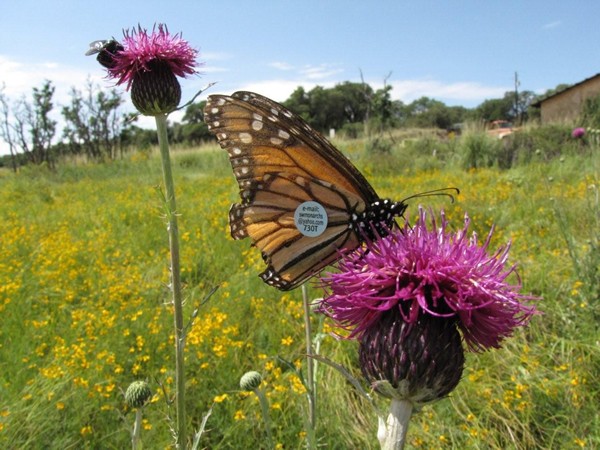Moving into April
In Mexico, the remaining colony of monarchs in La Salud has finally departed. Farther north, the leading edge of migration is slowly advancing, and reports of eggs, larvae and milkweed are picking up. And out West, Gail Morris provides an update on monarch activity in California and Arizona.
Eastern Monarch Population
Letter From Estela Romero: Final Departure
In her final letter of the season, Estela Romero shares news that the remaining monarchs in La Salud have left and begun their migration. And while it is always bittersweet to see monarchs go, Estela looks forward to their return next fall. She writes, "The gradual departure took place all last week up until Sunday, March 28. On Sunday morning, there were only a few lonely monarchs flying high over the top of our Oyamel trees . . . At a high point with smoky, humid views, dense clouds pushed over Angangueo town. The cloudy sky promised rain upon our heads and the tarnished sunset in the far west embraced us and subtlety murmured that monarchs will always come back home."
Read more of Estela Romero's Letter: Final Departure
Leer más de la carta de Estela Romero: Salida Final
Migrating Monarchs
The migration’s leading edge largely remains where it was last week. There were a few more reports farther north in Kansas and farther east in Georgia and South Carolina. Migration can be a stop-and-go journey with wind and weather in control. How does this year's pace of migration compare to previous years? Explore our Monarch Adult (First Sighted) map to find out.
Steve in Wichita, KS: "First Monarch seen this year. Seen at 6:15pm traveling east. No others seen during observed period of an hour." (03/26/2021)
Hedy in Hilton Head Island, SC: "This photo was taken at my garden at Heritage Farms Assn on Hilton Head Island. The female appeared to be laying eggs on my southern milkweed and Asclepius incarnata plants." (03/26/2021)
Annette in Plains, GA: "The Monarch’s colors were dull but it was beautiful. It was fluttering around looking for milkweed." (03/30/2021)
Milkweed, Eggs and Caterpillars
As spring progresses, the next generation can complete the life cycle more quickly where temperatures are warm. Eggs and Larvae seen in states such as Texas and Florida are safe from the colder temperatures experienced elsewhere. And, of course, monarchs need not only warm temperatures but also milkweed. Keep your eye on where milkweed has emerged. Is milkweed growing fast enough to keep up with the pace of migration? Explore our Milkweed (First Sighted) map to find out.
Chuck in Driftwood, TX: "We did a follow up walk on our perimeter path that we saw many eggs on last week. We continued to see eggs and we also are seeing young larvae beginning their new life." (03/24/2021)
Ryan in Forney, TX: "Received 16 eggs on potted milkweed plants. Even saw the monarch laying them." (03/28/2021)
Mijeong in Lawrence, KS: "First sighting of common milkweed." (03/31/2021)
Western Monarch Population
Letter from Gail Morris: Western Monarch Spring Report #5
Out West, Gail Morris reports on a slow week for migration. But given the current timing and weather conditions, this is not a surprise. Gail writes, "By far this is the smallest number of First Sightings of monarchs this week in California and Arizona. The overwintering monarchs in the region are likely reaching the end of their lifespan and it is normal for sightings of old, worn monarchs to decrease as we approach early to mid April . . . Recent cold spells limited monarchs moving through chilly mountain passes or along rivers where lack of early milkweed, nectar and other resources hinder their movement."
Read more of Gail Morris’ Letter: Western Monarch Spring Report #5
Looking For Fun Activities To Do At Home?
Look no further! Journey North has many resources for anyone with a curious mind. This week we feature resources related to the Special Connections Between Monarchs and Milkweed.
Report Your Observations and Include Photos
As migration gains momentum, remember to report your monarch observations to Journey North. If possible, include photos in your reports. Photos provide indicators such as wing condition to help determine if a monarch is migratory or not. And please make sure your photo is properly rotated before submitting.


